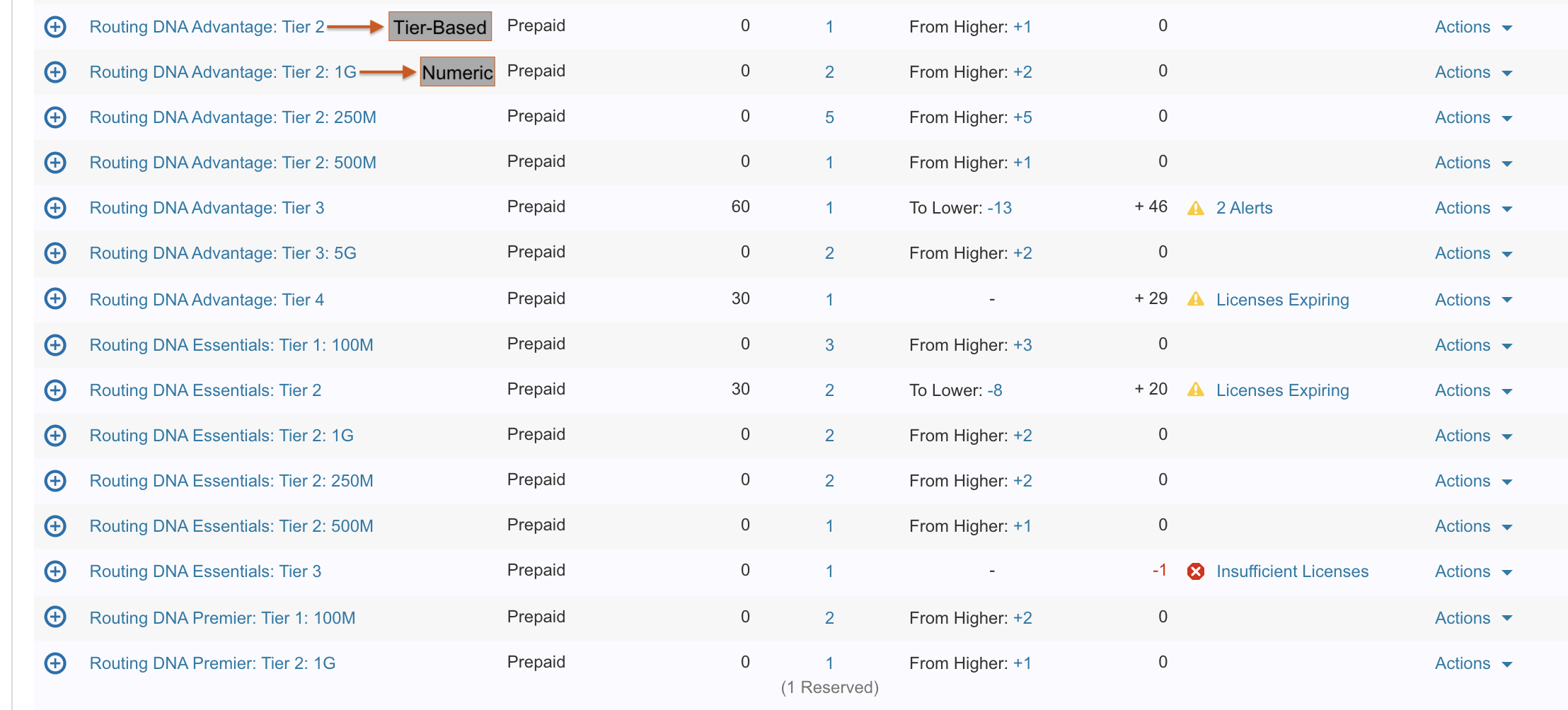What's new and changed
The following table provides a summary of license related changes applicable to the Cisco Catalyst 8200, 8300, and 8500 Edge platforms. The table lists only the software release that introduced support for a given feature in a given software release train. Unless noted otherwise, subsequent releases of that software release train also support that feature.
|
Feature Name |
Release |
Feature Information |
|---|---|---|
|
500 Mbps Aggregate for Tier 1 and 250 Mbps Throughput Configuration in Autonomous Mode |
Cisco IOS XE 17.14.1a |
When you configure a throughput of 250 Mbps or T1, if an HSECK9 license is available on the device, then aggregate throughput throttling is effective. Throughput is capped at 500 Mbps and any distribution of traffic in the upstream and downstream direction is allowed. In earlier releases, bidirectional throughput throttling was applicable to T1 and 250 Mbps. Throughput was capped at 250 Mbps in each direction. For more information, see Release-wise changes in throttling behavior. |
|
Aggregate Throughput Throttling - Physical Platforms |
Cisco IOS XE Cupertino 17.8.1a |
For throughput levels greater than 250 Mbps and Tier 2 and higher tiers, when you configure the bidirectional throughput value on the device, aggregate throughput throttling is effective. This means that traffic is throttled in an aggregate manner irrespective of the distribution of the traffic in the upstream and downstream direction. Bidirectional throughput is represented in the license PID. For example, in DNA-C-500M-E-3Y and DNA-C-T2-E-3Y, the aggregate throughput is double the bidirectional throughput. For more information, see Release-wise changes in throttling behavior. |
|
Tier-Based Licenses |
Cisco IOS XE Cupertino 17.7.1a |
Support for tier-based throughput configuration was introduced in addition to existing bandwidth-based (numeric) throughput configuration. Starting with the lowest throughput level, the available tiers are Tier 0 (T0), Tier 1 (T1), Tier 2 (T2), and Tier3 (T3). Each tier represents a throughput level. If the license PID for a product is tier-based, the license is displayed with the tier value in the CSSM Web UI. For a product with a tier-based license, you can configure a tier-based throughput value, and you can also convert to a tier-based throughput value. For more information, see Throughput and Numeric and tier-based throughput. |
|
Cisco Digital Network Architecture (DNA) licenses |
Cisco IOS XE Amsterdam 17.3.2 |
Support for Cisco DNA licenses was introduced. Cisco DNA Licenses are categorised into network-stack licenses and a DNA-stack add-on licenses. For more information, see Cisco DNA license. |
|
High Security License (HSECK9) |
Cisco IOS XE Amsterdam 17.3.2 |
Support for the HSECK9 license was introduced. For more information, see High security license. |
|
Cisco Unified Border Element license (Cisco UBE license) Cisco Unified Communications Manager Express license (Cisco Unified CME license) Cisco Unified Survivable Remote Site Telephony license (Cisco Unified SRST license) |
Cisco IOS XE Amsterdam 17.3.2 |
Support for Cisco UBE, Cisco Unified CME, Cisco Unified SRST licenses was introduced. For more information, see Cisco Unified Border Element license, Cisco Unified CME License, and Cisco Unified SRST License. |
Use the Cisco Feature Navigator to find information about platform support and Cisco software image support. To access the Cisco Feature Navigator, go to www.cisco.com/go/cfn. An account on Cisco.com is not required.



 Feedback
Feedback